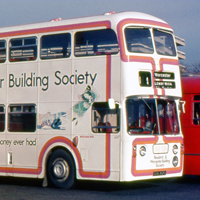Service W4: Service History
Introduction
Service W4
On Friday 1st June 1928, Birmingham and Midland Motor Omnibus Company Limited (BMMO—Midland “Red†Motor Services) started operation of a network of local area bus services in Worcester City as part of the “Worcester Agreementâ€, replacing the electric tramway network that ceased operation on the previous day. The new Worcester bus network was the first local area network introduced by BMMO to carry local area prefixes, having route numbers with ‘W’-prefix.
- Service W1: Worcester City Centre – Ombersley Road.
- Service W2: Worcester City Centre – Droitwich Road.
- Service W3: Worcester City Centre – Bromyard Road.
- Service W4: Worcester City Centre – Malvern Road.
- Service W5: Worcester City Centre – Rainbow Hill.
- Service W6: Worcester City Centre – London Road.
- Service W7: Worcester City Centre – Bath Road (Berwick Arms).
- Service W8: Worcester City Centre – Shrub Hill.
- Service W9: Worcester City Centre – Tolladine Road.
- Service W10: Worcester City Centre – Bath Road (Norton Turning).
- Service W11: Worcester City Centre – Bransford Road.
- Service W12: Worcester City Centre – Comer Gardens.
- Service W14: Worcester City Centre – Martley Road.
Service W4 (1928–1976)
Operated by Birmingham and Midland Motor Omnibus Company Limited
Service W4 was introduced by Birmingham and Midland Motor Omnibus Company Limited (BMMO—Midland “Red” Motor Services) with the start of the Worcester City network on Friday 1st June 1928, as a direct replacement for the withdrawn Malvern Road tram service.
The service ran every day between Worcester City Centre (The Cross), St. John’s and Malvern Road (Foley Road). Most of the time the service operated every 10-minutes in each direction, but this was reduced to run every 20-minutes on Sunday mornings, or increased to run every 8-minutes on Saturday afternoons and evenings.
After the Second World War, the route was extended to the junction of Malvern Road and Hanbury Park Road, and the service frequency was standardised to run every 10-minutes on all days. In the early 1960s, the service frequency was reduced on Sundays to run every 30-minutes, but continued to run every 10-minutes on other days.
In the early 1970s, the route was extended to Lower Wick and returned to the City Centre via Bromwich Road as a circular route. Local Worcester Service W3 ran in the opposite direction, each with an hourly frequency on Mondays to Saturdays, with no service offered on Sundays.
Service W3 and Service W4 were withdrawn c. 1976 and replaced by a new cross-city service linking Lower Wick with Bath Road.
